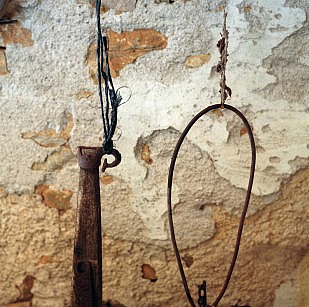Wil van Dusseldorp
project space
9 March - 12 May 2013
Studio van Dusseldorp is a gallery located just a short distance from Museum De Pont. For twelve years now, Wil van Dusseldorp (Medan, Indonesia, 1936) and his wife have been running this together. The gallery's name is a reminder of the time when, as a professional photographer, he used the ground floor of the house on the Wilhelminapark as his photography studio. Van Dusseldorp specialized in architectural photography and technical photographs, which he produced mainly on commission. In addition to this, he frequently photographed the work of visual artists. The exhibition in the project space shows yet another facet of his photography. This is dedicated to a series of photographs that came about in Saillac, a small country village in the French departement Lot.
During the 1970s Van Dusseldorp and his wife chose this area in the southwestern part of France as the place to spend their summers. Over the past decades they have witnessed radical changes taking place in the French countryside. What began as a number of incidental photographs developed, over the course of twenty years, into a coherent series about a culture which no longer exists. The series consists of two parts. There are the portraits in black-and-white, which Van Dusseldorp made of the village's few inhabitants during the early 1970s: farmer Raymond Conte, standing with his flock at the threshold of his sheepfold; the electrician holding a tangle of wires; and old Monsieur Castelnaud, stooping from rheumatism. The razor-sharp photographs are rich with black-and-white contrast. No detail escapes our attention, not even the texture of Monsieur Menard's soiled undershirt. Adjoining these is a series of color photographs from the 1980s, when a further depopulation of the already sparsely inhabited region signalled the demise of traditional farming. Van Dusseldorp recorded the silent evidence of this in photographs, showing part of a wall inside a barn or an out-of-the-way corner of a farmyard. Leaning against an exterior wall is an old wooden wagon wheel, partly overgrown with high grass. A collection of tools and materials that fell into disuse beneath a lean-to must have piled up there over a period of many decades: a farmer never knows, after all, whether something might come in handy. In the photographs the signs of this culture of scarcity, so characteristic of farm life, have been portrayed with great concern; the diversity of forms and materials emerges in a beautiful way. Sometimes a single detail says enough to produce a revealing image. Due to the visual cropping of a weathered wall, a bent scrap of wire and awooden shaft have become an abstract composition. Like the writer John Berger, with his trilogy Into Their Labours, and Raymond Depardon, with his film trilogy Profils paysans, Van Dusseldorp has erected a small monument to a way of life that is gone forever.
